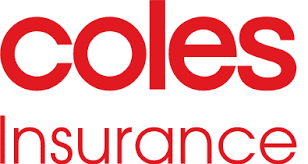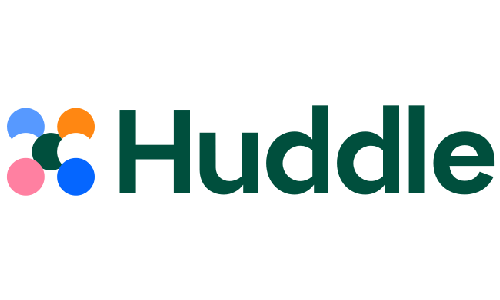For almost every Australian homeowner, their property is their most valuable asset. That’s why home and contents insurance is so crucial: it brings significant peace of mind that you can protect your back pocket if something goes wrong.
It’s clear that those who own their property outright or are currently paying off their mortgage feel that way, as a 2025 survey by the Australia Institute found that 78% of homeowners had fully insured their house. That’s compared to just 4% who left theirs uninsured. So, when you’re on the market for coverage for your home and contents, it’s worth taking the time to find the right insurance policy.
Do I need home and contents insurance?
Home insurance (also known as building insurance) is only compulsory if you’re paying off your home loan, as all lenders will require you to have an adequate policy as a condition of the mortgage agreement. Contents insurance won’t be mandated by your lender.
The exact requirements for when you need your home insurance policy sorted by depends on where you’re buying, as it’s different in each state and territory. For example, in NSW and Victoria, insurance is required from the settlement date, but in SA, Tasmania and the ACT, you’ll need to have a policy in place before or within one business day of the exchange of contracts.
If your home loan is already paid off or you’re buying a property without one, you aren’t required to take out home and contents insurance. You’ll need to consider whether not having any coverage is the right move for you, especially given you’ll be left to foot the bill for any damage to the property.
Do I need home insurance for an apartment or townhouse?
If you purchase a strata-titled property, such as an apartment or unit, your home may already be covered by an insurance policy. This coverage is likely to be built into your strata fees. You’ll need to confirm this with your vendor or body corporate manager (also known as strata manager) during the purchase process.
If you’re buying a Torrens-titled townhouse, however, your home insurance obligations will be the same as if you were buying a house. In this case, your lender would require you to take out a policy yourself.
What types of home insurance are available?
There are four main types of insurance that you can take out to cover your home. Consider each one to work out what’s best for you (and whether you need more than one policy):
Building insurance
Your home itself is your most valuable asset, so it’s important to have cover to match. Building insurance is designed to cover the structure of your home against a range of insured events.
Contents insurance
Looking for protection against damage to or loss of your valuables? Whether it’s furniture like couches and beds, appliances, electronics, jewellery or fixtures or fittings, contents insurance can offer the cover you’re after. This is commonly combined with building insurance and sold as home and contents insurance.
Landlord insurance
Of course, your needs are slightly different if you’re renting out an investment property. That’s where landlord insurance comes in handy. Not only does it cover structural and contents damage (if it’s furnished), but also damage caused by your tenants or their guests.
Flood insurance
Because some policies don’t cover extreme weather events, you might need to take out optional add-ons like flood insurance to increase your protection. This includes flood cover, which may be essential if your home is near a body of water prone to overflowing (except the ocean).
What events do home insurance policies cover?
The exact inclusions and exclusions of home insurance depend on the policy you buy and your insurer’s terms and conditions. Here’s a list of events leading to damage that are and aren’t usually covered as part of a home and contents insurance policy:
- Fire
- Lightning
- Natural disasters (such as earthquakes, tsunamis and cyclones)
- Explosion
- Storm
- Theft, attempted theft, malicious damage or vandalism
- Impact (such as a tree falling onto your house)
- Riots or civil commotion
- Escape of liquid (such as a burst pipe)
- Actions of the sea (such as damage caused by high tides or tidal waves)
- Wear and tear
- Acts of war
- Tree lopping
- Damage caused during renovations or defective construction/workmanship
- Damage stemming from existing damage
- Animal or pest damage
- Not adequately securing your home
- Leaving your home vacant for two to four months consecutively
What optional extras are available on home and contents insurance policies?
There are some events that you’ll have to pay a bit extra to have included in your policy’s coverage. These can include:
- Accidental damage
- Excess-free glass breakage
- Flood cover
- Motor burnout cover
- Portable effects cover (cover for damage to valuables outside your home)
Part of comparing different policies is working out whether optional extras are worth the additional cost. For example, think about whether the increased premium is a fair trade-off for not having to pay an excess if your sliding door’s glass is shattered. If you aren’t near a body of water or are at the top of a hill, flood cover might not be something you need to worry about, either.
What is accidental damage cover in home insurance?
Accidental damage cover is an optional extra available on most home and contents insurance policies. It offers cover for regular household accidents that aren’t otherwise covered by your policy. For example, if your child was kicking a ball around inside and smashed your TV, accidental damage insurance could help you cover the cost of repairs. Some other situations that you might be able to claim for are:
- Smashed tablets and laptops
- Red wine spills on valuable carpeting
- Breakages of expensive artwork
- Damage to your items or home structure while moving furniture
However, certain items will be excluded under this optional extra. These may include mobile phones, cash or gift cards, clothing, sporting equipment (while in use) and items used for your business.
How much is home insurance?
The cost of your policy depends on a range of factors, with one of the biggest being where you live. You can see in the table below what different home and contents insurance quotes in capital cities and regional locations in each state and territory look like for a freestanding house:
| City/town | Cheapest premium | Average premium | Most expensive premium |
|---|---|---|---|
| Sydney | $1,221 | $1,835 | $2,938 |
| Wollongong | $1,165 | $1,944 | $2,572 |
| Brisbane | $899 | $2,077 | $3,342 |
| Ipswich | $1,705 | $2,283 | $2,839 |
| Melbourne | $847 | $1,384 | $1,896 |
| Ballarat | $931 | $1,380 | $1,869 |
| Adelaide | $1,180 | $1,455 | $1,880 |
| Mount Barker | $848 | $1,355 | $1,876 |
| Perth | $1,142 | $1,718 | $2,157 |
| Margaret River | $964 | $1,552 | $2,108 |
| Darwin | $2,030 | $2,450 | $2,809 |
| Alice Springs | $2,163 | $3,614 | $6,161 |
| Canberra | $1,456 | $1,638 | $1,911 |
| Hall | $1,692 | $2,060 | $2,503 |
| Hobart | $849 | $1,379 | $1,827 |
| Burnie | $789 | $1,437 | $1,893 |
| Quotes based on a freestanding house built in 2022 and lived in by the current owner since then with no mortgage on the property and no home insurance claims in the last five years. The wall material is double brick and the roof material is Colorbond, with an alarm system installed. Home replacement cost is $500,000 and contents replacement cost is $50,000. Quotes obtained from Compare the Market on 28 November 2025. | |||
According to the above quotes, the cheapest policy available is in Burnie, Tasmania, while the cheapest average policy cost is in Mount Barker, South Australia. The costliest average policy is in Alice Springs, which also has the most expensive single premium at over $6,100, but Brisbane is actually the most expensive for average premiums outside of the NT.
These quotes are only for illustrative purposes, though, as they can vary substantially within the same city or town depending on your area. That’s why it’s so important to compare your options before signing on the dotted line.
Aside from where you live, the key variables affecting the cost of your policy are:
- Home and contents replacement cost: the more it costs to rebuild or replace your home and contents, the more you’re likely to pay for your insurance policy. This means that people with valuable belongings that they want to insure or a more expensive home will usually be staring at an expensive premium.
- The age of your property: if you have an older home, insurance may set you back more compared to a newer home with more up-to-date security and other internal systems.
- Threat of natural disaster: if your home is in the firing line when it comes to things like bushfires, floods or other disasters, your premium is likely to soar.
- How your property is built: the materials with which your home was built will also have a say in the cost of your insurance. Brick homes are usually cheaper to insure than wooden builds, for example.
- Whether you’ve made home insurance claims previously: a history of frequent claims is likely to count against you when it comes to renewing your home insurance. Having five or more years without any claims will help you lower your premium.
- Whether your home is rented or owner-occupied: homes that are rented tend to come with more expensive premiums, as there’s less certainty with investment properties than owner-occupied homes.
Why compare home insurance policies through Savvy?
100% free comparisons
There's no need for you to pay a cent to compare a variety of competitive policies side-by-side in one place.
Any time, anywhere
Because all our tools are available online, you can compare home insurance policies no matter where you live, day or night.
Reputable partners
We're partnered with Compare the Market to help our customers lock in the best deal tailored to their needs.
Cheap home insurance: tips to reduce your premiums
-
Compare policy quotes online before you buy
Perhaps the simplest way to save is by comparing a range of quotes before you buy your policy. Doing this will give you more confidence that you’re getting the most bang for your buck. It’s important not to sacrifice quality coverage in the pursuit of the cheapest deal, though.
-
Increase your excess
Choosing a higher excess means you’ll pay more when you make a claim, but less each month or year on premiums. If you can afford the increased excess, it could save you in the long run.
-
Take steps to improve your home security
Having sophisticated alarm and home surveillance systems installed can act as a deterrent for potential break-ins. If you have these around your home, insurers will reward you with lower premiums.
-
Get an accurate estimate on home and contents replacement
The simple reason that many end up paying overs for their home insurance is that the sum insured is too high. Providing accurate numbers for your home and valuables can make a difference to your back pocket.
-
Don’t make more claims than necessary
Making claims regularly for small things can count against you when your premiums are reassessed after 12 months. If the cost is near or less than your excess, it probably isn’t worth submitting a claim if it costs more in the long run.
-
Look for signup bonuses or discounts
Plenty of insurers offer discounts for signing up online or bundling other policies, such as car insurance. Consider whether you can benefit from this and whether the coverage for all policies is good enough to justify moving your cover over to the same insurer, for instance.
-
Consider whether you really need the optional extras
Not all optional extras might be worth the extra spend for you. Things like portable effects cover and motor burnout can be useful, but it’s always crucial to think carefully about whether you’ll actually use them before tacking them onto your policy.
Why has my home insurance premium gone up by so much?
If you’re wondering why your policy’s premiums are through the roof, you aren’t alone. According to recent data from Choice, home insurance premiums rose by 16% or $359 on average in the 12 months to September 2025. A Canstar study also found that average new customer quotes went up by 14% on average over the same period, with policies in the Northern Territory spiking by as much as $700 per year.
There are several reasons why this is the case. A big one is inflation, which has seen prices rise significantly across the country in most areas since the COVID-19 pandemic, including for other types of insurance. This has had the knock-on effect of also increasing building and repair costs, which in turn contributes to the policy price hike.
Another important factor to consider is the occurrence of natural disasters in Australia, which have hit the northern and eastern states the hardest. Such disasters are increasing in frequency in Australia, keeping us among the highest in the world for financial losses related to floods, bushfires, storms and cold weather per capita.
Even if your home is in one of these increasingly impacted areas, comparing your policy options can still help you save. In Choice’s data, they found that three insurers had increased their average premiums by more than 30% between January 2024 and January 2025: Kogan (37.9%), RAC (32.6%) and Honey (30.7%). That isn’t the case for all insurers, though, so taking the time to compare could save you hundreds each year.
How to calculate the cost of rebuilding your home and replacing your contents
The simplest way to work out how much to insure your home for is by using a calculator. The Insurance Council of Australia has calculators for both contents and building replacement, which will give you an estimate of what you can nominate as your sum insured.
If you want to get a more tailored and precise figure, though, you can enlist the help of a professional valuer, architect or surveyor to assess your home. This will give you an accurate picture, but it’s likely to cost several hundred dollars to complete.
Regardless of which option you choose, there’s significant risk that lies in being underinsured. If the worst-case scenario does happen and you have to replace your home and contents, not having adequate cover could leave you thousands, tens of thousands or even hundreds of thousands out of pocket on top of having to manage everything.
- Polling – Home & contents insurance - The Australia Institute
- Kogan, RAC and Honey: The home insurers with the biggest annual price hikes - Choice
- Why home insurance costs are skyrocketing across Australia - realestate.com.au
- New data shows Australia's extreme weather losses among highest in world - ABC News
- Calculators - Insurance Council of Australia
- Trees and the law - Legal Services Commission South Australia









